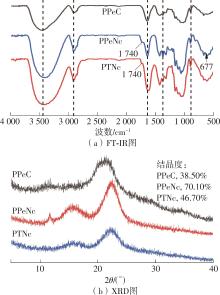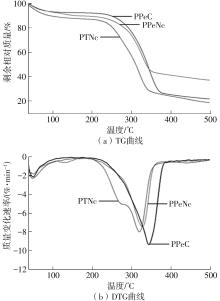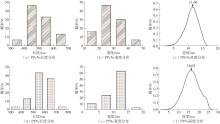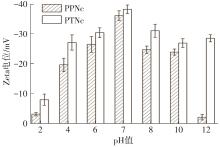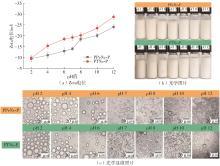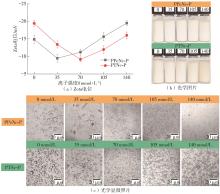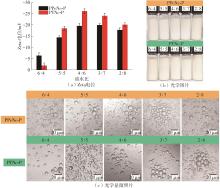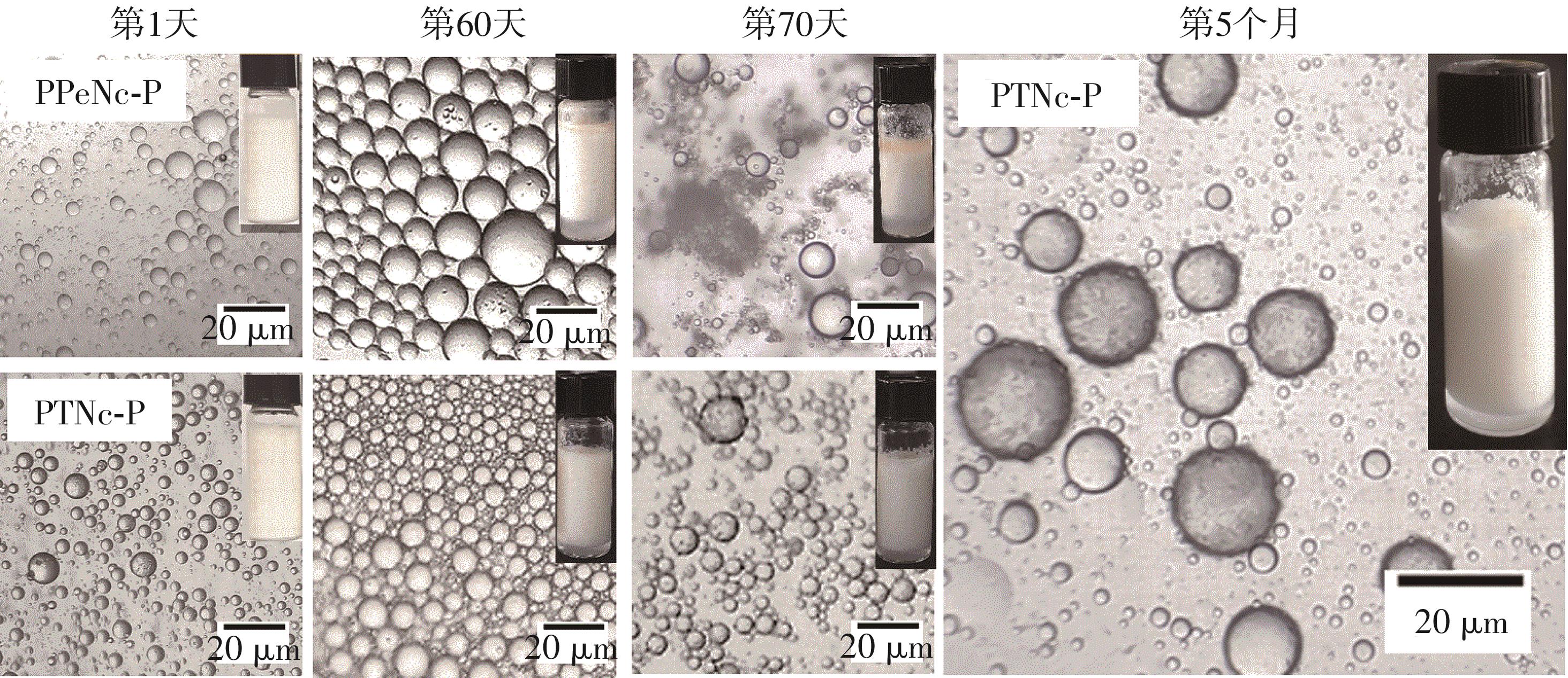| 1 |
LIN N, DUFRESNE A .Nanocellulose in biomedicine:current status and future prospect[J].European Polymer Journal,2014,59:302-325.
|
| 2 |
DAI H, HUANG Y, HUANG H .Enhanced performances of polyvinyl alcohol films by introducing tannic acid and pineapple peel-derived cellulose nanocrystals[J].Cellulose,2018,25(8):4623-4637.
|
| 3 |
DAI H,OU S, HUANG Y,et al .Utilization of pineapple peel for production of nanocellulose and film application[J].Cellulose,2018,25(3):1743-1756.
|
| 4 |
DUFRESNE A .Nanocellulose: a new ageless bionanomaterial[J].Materials Today,2013,16(6):220-227.
|
| 5 |
罗苏芹,戴宏杰,黄惠华 .不同制备方法对菠萝皮渣纳米纤维素的结构影响[J].包装与食品机械,2018,36(5):1-6.
|
|
LUO Su-qin, DAI Hong-jie, HUANG Hui-hua .Effect of different preparation methods on the structure of nanoce-llulose in pineapple peels[J].Packaging and Food Machinery,2018,36(5):1-6.
|
| 6 |
张燕,张铭涛,沈晓飞,等 .纳米纤维素的最新制备进展 Ⅰ. 化学法[J].纤维素科学与技术,2020,28(3):49-58.
|
|
ZHANG Yan, ZHANG Ming-tao, SHEN Xiao-fei,et al .Recent progress of preparation of nano-cellulose Ⅰ. The chemical methods[J].Journal of Cellulose Science and Technology,2020,28(3):49-58.
|
| 7 |
张欢,戴宏杰,陈媛,等 .离子液体-球磨法制备柠檬籽纤维素纳米纤丝及其结构表征[J].食品科学,2021,42(7):120-127.
|
|
ZHANG Huan, DAI Hongjie, CHEN Yuan,et al .Preparation and structure characterization of lemon seed cellulose nanofibrils using ionic liquid-assisted ball milling[J].Food Science,2021,42(7):120-127.
|
| 8 |
ISOGAI A, SAITO T, FUKUZUMI H .TEMPO-oxidized cellulose nanofibers[J].Nanoscale,2011,3(1):71-85.
|
| 9 |
MAO L, MA P, LAW K,et al .Studies on kinetics and reuse of spent liquor in the TEMPO-mediated selective oxidation of mechanical pulp[J].Industrial & Engineering Chemistry Research,2010,49(1):113-116.
|
| 10 |
SIQUEIRA P, SIQUEIRA É, DE LIMA A E,et al .Three-dimensional stable alginate-nanocellulose gels for biomedical applications:towards tunable mechanical properties and cell growing[J].Nanomaterials,2019,9(1):78.
|
| 11 |
JIANG Y, ZHAO Y, FENG X,et al .TEMPO-mediated oxidized nanocellulose incorporating with its derivatives of carbon dots for luminescent hybrid films[J].RSC Advances,2016,6(8):6504-6510.
|
| 12 |
CHEVALIER Y, BOLZINGER M A .Emulsions stabilized with solid nanoparticles:Pickering emulsions[J].Colloids and Surfaces A:Physicochemical and Engineering Aspects,2013,439:23-34.
|
| 13 |
TANG L, LIAO J, DAI H,et al .Comparison of ce-llulose nanocrystals from pineapple residues and its preliminary application for Pickering emulsions[J].Nanotechnology,2021,32(49):495708.
|
| 14 |
LI Q, WU Y, FANG R,et al .Application of nanocellulose as particle stabilizer in food Pickering emulsion:scope,merits and challenges[J].Trends in Food Science & Technology,2021,110:573-583.
|
| 15 |
ZHAI X, LIN D, LIU D,et al .Emulsions stabilized by nanofibers from bacterial cellulose:new potential food-grade Pickering emulsions[J].Food Research International,2018,103:12-20.
|
| 16 |
KARGAR M, FAYAZMANESH K, ALAVI M,et al.Investigation into the potential ability of Pickering emu-lsions (food-grade particles) to enhance the oxidative stability of oil-in-water emulsions[J].Journal of Colloid and Interface Science,2012,366(1):209-215.
|
| 17 |
KALASHNIKOVA I, BIZOT H, BERTONCINI P,et al .Cellulosic nanorods of various aspect ratios for oil in water Pickering emulsions[J].Soft Matter,2013,9(3),952-959.
|
| 18 |
HU X, WANG J, HUANG H .Impacts of some macromolecules on the characteristics of hydrogels prepared from pineapple peel cellulose using ionic liquid[J].Cellulose,2013,20(6):2923-2933.
|
| 19 |
CHEN A, GUAN Y J, Bustamante M,et al .Production of renewable fuel and value-added bioproducts using pineapple leaves in Costa Rica[J].Biomass and Bioenergy,2020,141:105675.
|
| 20 |
HOSSAIN M A, RAHMAN S M M .Total phenolics, flavonoids and antioxidant activity of tropical fruit pineapple[J].Food Research International,2011,44(3):672-676.
|
| 21 |
GIL L S, MAUPOEY P F .An integrated approach for pineapple waste valorization. Bioethanol production and bromelain extraction from pineapple residues[J].Journal of Cleaner Production,2018,172:1224-1231.
|
| 22 |
RODSAMRAN P, SOTHORNVIT R .Preparation and characterization of pectin fraction from pineapple peel as a natural plasticizer and material for biopolymer film[J].Food and Bioproducts Processing,2019,118:198-206.
|
| 23 |
YE W, HU Y, MA H,et al .Comparison of cast films and hydrogels based on chitin nanofibers prepared using TEMPO/NaBr/NaClO and TEMPO/NaClO/NaClO2 systems[J].Carbohydrate Polymers,2020,237:116125.
|
| 24 |
OH S Y, YOO D I, SHIN Y,et al .FTIR analysis of cellulose treated with sodium hydroxide and carbon dio-xide[J].Carbohydrate Research,2005,340(3):417-428.
|
| 25 |
LIU Z, HUANG H .Preparation and characterization of cellulose composite hydrogels from tea residue and carbohydrate additives[J].Carbohydrate Polymers,2016,147:226-233.
|
| 26 |
HAAFIZ M K M, HASSAN A, ZAKARIA Z,et al .Isolation and characterization of cellulose nanowhiskers from oil palm biomass microcrystalline cellulose[J].Carbohydrate Polymers,2014,103:119-125.
|
| 27 |
FENG X, MENG X, ZHAO J,et al .Extraction and preparation of cellulose nanocrystals from dealginate kelp residue:structures and morphological characterization[J].Cellulose,2015,22(3):1763-1772.
|
| 28 |
刘瑞,付时雨 .H型和Na型羧基纤维素表面改性接枝己内酯的比较研究[J].中国造纸学报,2017,32(1):32-39.
|
|
LIU Rui, FU Shi-yu .The comparison of grafting polycaprolactone on carboxylate cellulose in H or Na form[J].Transactions of China Pulp and Paper,2017,32(1):32-39.
|
| 29 |
FRENCH A D .Idealized powder diffraction patterns for cellulose polymorphs[J].Cellulose,2014,21(2):885-896.
|
| 30 |
王晓宇,张洋,江华,等 .氧化降解法制备纳米纤维素的特性分析[J].西北林学院学报,2016,31(4):246-251.
|
|
WANG Xiao-yu, ZHANG Yang, JIANG Hua,et al .Analysis of the characteristic for the cellulose nanocrystals prepared with oxidative degradation[J].Journal of Northwest Forestry University,2016,31(4):246-251.
|
| 31 |
SHARMA P R, VARMA A J .Thermal stability of ce-llulose and their nanoparticles: effect of incremental increases in carboxyl and aldehyde groups[J].Carbohydrate Polymers,2014,114:339-343.
|
| 32 |
MARIANO M, KISSI N EL, DUFRESNE A .Cellulose nanomaterials:size and surface influence on the thermal and rheological behavior[J].Polímeros,2018,28:93-102.
|
| 33 |
申玲玲,张放,任浩,等 .氧化纤维对纳米纤维素气凝胶微球的影响[J].纤维素科学与技术,2017,25(3):1-7.
|
|
SHEN Ling-ling, ZHANG Fang, REN Hao,et al .Effect of oxidized fibril on cellulose nanofiber based aerogel microsphere[J].Journal of Cellulose Science and Technology,2017,25(3):1-7.
|
| 34 |
戴磊,程婷,王岩,等 .TEMPO氧化纤维素纳米纤维在膜材料中的研究进展[J].陕西科技大学学报,2020,38(1):115-123.
|
|
DAI Lei, CHENG Ting, WANG Yan,et al .TEMPO-oxidized cellulose nanofibers in film materials:a review[J].Journal of Shaanxi University of Science & Technology,2020,38(1):115-123.
|
| 35 |
MORAIS J P S, DE FREITAS R M, NASCIMENTO L D,et al .Extraction and characterization of nanocellulose structures from raw cotton linter[J].Carbohydrate Polymers,2013,91(1):229-235.
|
| 36 |
LI T, ZHONG Q, ZHAO B,et al .Effect of surface charge density on the ice recrystallization inhibition activity of nanocelluloses[J].Carbohydrate Polymers,2020,234:115863.
|
| 37 |
QI W, YU J, ZGANG Z,et al .Effect of pH on the aggregation behavior of cellulose nanocrystals in aqueous medium[J].Materials Research Express,2019,6(12):125078.
|
| 38 |
ZHANG T, ZHOU P, ZHAN Y,et al .Pectin/lysozyme bilayers layer-by-layer deposited cellulose nanofibrous mats for antibacterial application[J].Carbohydrate Polymers,2015,117:687-693.
|
| 39 |
TZOUMAKI M V, MOSCHAKIS T, KIOSSEOGLOU V,et al .Oil-in-water emulsions stabilized by chitin nanocrystal particles[J].Food Hydrocolloids,2011,25(6):1521-1529.
|
| 40 |
DAI H, LI Y, MA L,et al .Fabrication of cross-linked β-lactoglobulin nanoparticles as effective stabilizers for Pickering high internal phase emulsions[J].Food Hydrocolloids,2020,109:106151.
|
| 41 |
QI W, LI T, ZHANG Z,et al .Preparation and cha-racterization of oleogel-in-water Pickering emulsions stabilized by cellulose nanocrystals[J].Food Hydroco-lloids,2021,110:106206.
|
| 42 |
LEE L L, NIKNAFS N, HANCOCKS R D,et al .Emulsification:mechanistic understanding[J].Trends in Food Science & Technology,2013,31(1):72-78.
|
| 43 |
TANAKA R, SAITO T, ISOGAI A .Cellulose nanofibrils prepared from softwood cellulose by TEMPO/NaClO/NaClO2 systems in water at pH 4.8 or 6.8[J].International Journal of Biological Macromolecules,2012,51(3):228-234.
|
